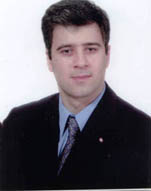Top 3 Reads from HPME Students
Based on his experience as a physician, senior healthcare administrator, international health systems consultant, researcher and student in the HPME MHSc program, Alan Monavvari recommends the following articles on translating knowledge and transforming organizations. Dr. Monavvari convocated in June 2006 and is currently working as a Family Physician and Chief Resident at Sunnybrook Health Sciences Centre.
From Advanced Cases in Health Management and Policy (HAD5731), taught by Professor Ross Baker
John P. Kotter. (1995). Leading Change: Why Transformation Efforts Fail. Harvard Business Review, March-April, 73(2):59-67.
Originally published in 1995, this article was republished in January 2007 as a Harvard Business Review Classic. Kotter describes different change strategies such as total quality management, reengineering, right sizing, restructuring, cultural change and turnaround. It discusses the reasons why these efforts fail most of the time. Eight different reasons have been discussed. Not establishing a great sense of urgency, not creating a powerful enough guiding coalition, lacking a vision, undercommunicating the vision by a factor of ten, not removing obstacles to the new vision, not systematically planning for and creating short-term wins, declaring victory too soon and not anchoring changes in the corporation's culture. "The most general lesson to be learned from the more successful cases is that the change process goes through a series of phases that, in total, usually require a considerable length of time".
From Human Resources Management and Labour Relations (HAD5769), taught by Professor Louise Lemieux-Charles:
Linda Argot and Paul Ingram. (2000). Knowledge Transfer: A Basis for Competitive Advantage in Firms, Organizational Behavior and Human Decision Processes, 82(1):150-169.
This article discusses the repositories of knowledge within an organization. The authors present a framework in which basic elements of organizations -- members, tools and tasks -- interact. These basic elements combine to form subnetworks. According to the framework, organizational performance improves with increases in both internal compatibility of the networks and their external compatibility with other networks. It also describes the knowledge as a basis for competitive advantage. The article also describes the strategies to move knowledge and factors affecting knowledge transfer. "Embedding knowledge in the subnetworks that involve people minimizes the likelihood of transfer to external organizations because knowledge in these reservoirs is least likely to fit other contexts".
From Competition, Cooperation and Strategy in Healthcare (HAD5775), taught by Professor Adalsteinn Brown:
Balaji S. Chakravarthy. (1997). Managing Corporate Transformation: Two Contrasting Leadership Styles. In Thomas H., O'Neal D., & Ghertman (ed.) Strategy, Structure, & Style (p. 69-83). Chichester: M. J Wiley & Sons.
This article describes the multistage process of corporate transformation. The model proposed by the author shows the three Rs of corporate transformation -- Restructuring, Revitalization and Renewal. It gives two practical examples from the business world and their approach to transformation. In one example, the firm used simplifying the structure and downsizing (a top-down approach). The second example uses a different strategy by giving stakeholders a voice in the process (a bottom-up approach). It compares the two strategies and describes the implications for practice. The predominance of commercial legitimacy in the first approach was brought up as an American model. While social legitimacy may be hurt in the process, the very survival of the firm may be at stake without such an action. In the second approach, providing a voice for stakeholders has been used to build trust during restructuring. If quick performance turnaround is not an imperative, the second approach has been recommended. "The delay in producing short-term performance gains should be traded off against building an organizational trust platform that is essential to revitalization and renewal".
Submissions wanted! If you would like to share an article (or three) that affected your thinking or practice as a healthcare researcher, policymaker, practitioner or manager, please email the HPME Connection editor.
|



